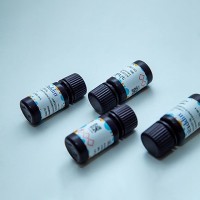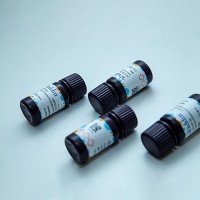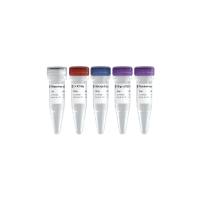Oligonucleotides Containing Degenerate Bases: Synthesis and Uses
互联网
683
Major uses of oligodeoxyribonucleotides are as hybridization probes, sequencing primers, and, more recently, as primers for the polymerization chain reaction. When a protein sequence or part thereof is known, the construction of oligomer probes and primers is complicated by the codon degeneracy. The chain multiplicity in such probes or primers may reach very large numbers, leading to often ineffective reagents or poor signals. A number of ways of mitigating this general problem have been devised (1 ); among these is the use of hypoxanthine I as a base that may be inserted at positions of degeneracy. Although it forms basepairs with C, A, G, and T of weak and varying stabilities (in that order), its ability to sustain the dissociation temperatures of DNA duplexes containing it above those with mismatches has led to its use first in probes and more recently in primers (2 –6 ). We discuss I later, but here we describe the synthesis of monomers and oligomers containing the pyrimidine, 6H,8H-3,4-dihydropyrimido[4,5-c][l,2]oxazin-7-one, P (showing C, T degeneracy) and 2-amino-6-methoxyaminopurine, K (showing A,G degeneracy) (Fig. 1 ) (7 ,8 ). These bases were chosen on the grounds that their amino-imino tautomeric constants were much nearer to unity than the normal bases and that, for example, the P base could form Watson-Crick basepairs with both A and G as shown in Fig. 1 (a,b).






